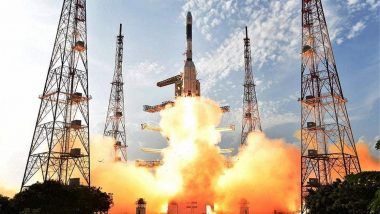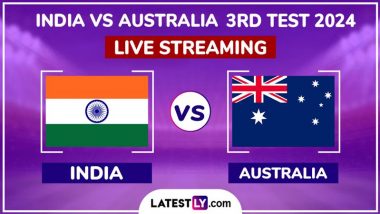Chardrayaan-2 is all set to be launched on July 15 at 2:51 am from the launch pad of the Indian Space Research Organisation (ISRO) in Sriharikota. Chandrayaan-2 will be launched from GSLV MK-III. Chandrayaan-2 is a sequel to Chandrayaan-1 which was India’s maiden unmanned moon mission. Chandrayaan-1 was announced by late Prime Minister Atal Bihari Vajpayee on the 56th Independence Day in 2003. Chandrayaan-2 Launch: GSLVMkIII Carrying Moon Mission Spacecraft Undergoes Launch Checks at Sriharikota.
Chandrayaan-1 was launched successfully on October 22, 2008, from the Satish Dhawan Space Centre (SDSC), Sriharikota. The spacecraft with an initial weight of approximately 590 kg was launched on a Polar Satellite Launch Vehicle (PSLV) C 11. With the launch of Chandrayaan-1, India had become the fourth nation -- after the United States, China and Russia -- to successfully perform a "soft landing" of an unmanned mission on the moon.
The Chandrayaan-1 mission performed high-resolution remote sensing of the moon in visible, near-infrared (NIR), low energy X-rays and high-energy X-ray regions. One of the objectives of the mission was to prepare a three-dimensional atlas of both near and far side of the moon. Chandrayaan 2 Launch Date And Time: Know When, Where And How to Watch Launch of India's Second Moon Mission From Sriharikota.
Chandrayaan-1 aimed at conducting chemical and mineralogical mapping of the entire lunar surface for distribution of mineral and chemical elements such as Magnesium, Aluminium, Silicon, Calcium, Iron and Titanium. It also focused on the distribution of high atomic number elements such as Radon, Uranium and Thorium with high spatial resolution. Chandrayaan 2: Launch Date, Project Cost & Other Details of India's Second Mission to Moon.
The first Indian mission to the moon met planning and management objectives. The mission goal of harnessing the science payloads, lunar craft and the launch vehicle with suitable ground support systems including Deep Space Network (DSN) station were realised, which were helpful for future explorations like the Mars Orbiter Mission. Mission goals like spacecraft integration and testing, launching and achieving lunar polar orbit of about 100 km, in-orbit operation of experiments, communication/ telecommand, telemetry data reception, quick look data and archival for scientific utilisation by scientists were also met.
(The above story first appeared on LatestLY on Jul 14, 2019 10:55 PM IST. For more news and updates on politics, world, sports, entertainment and lifestyle, log on to our website latestly.com).













 Quickly
Quickly




















